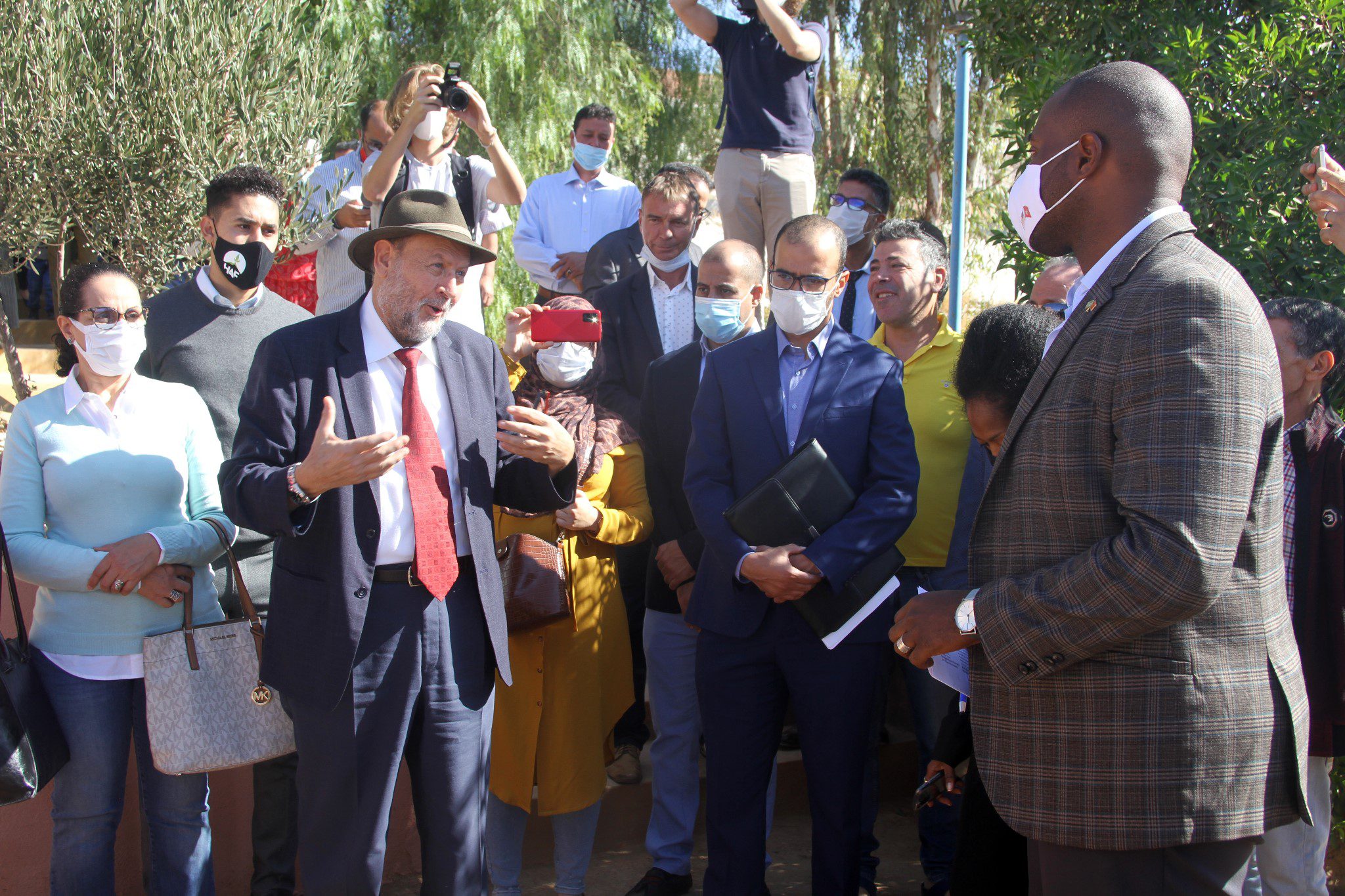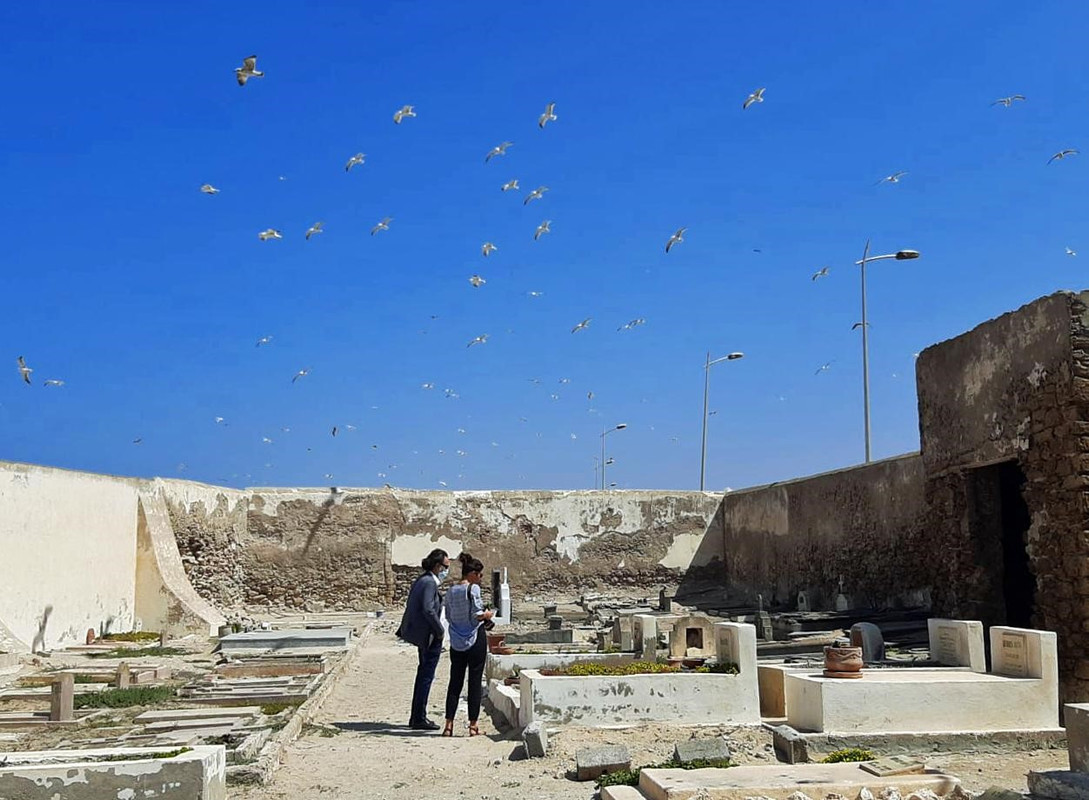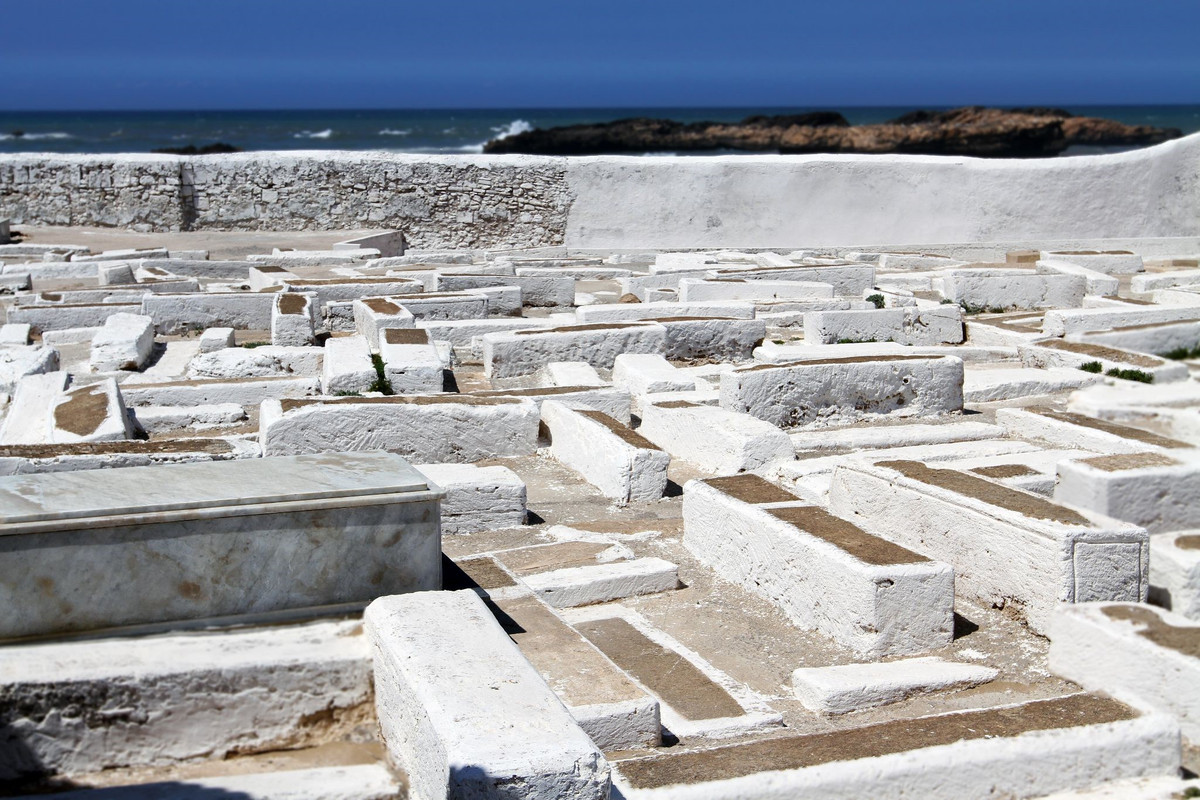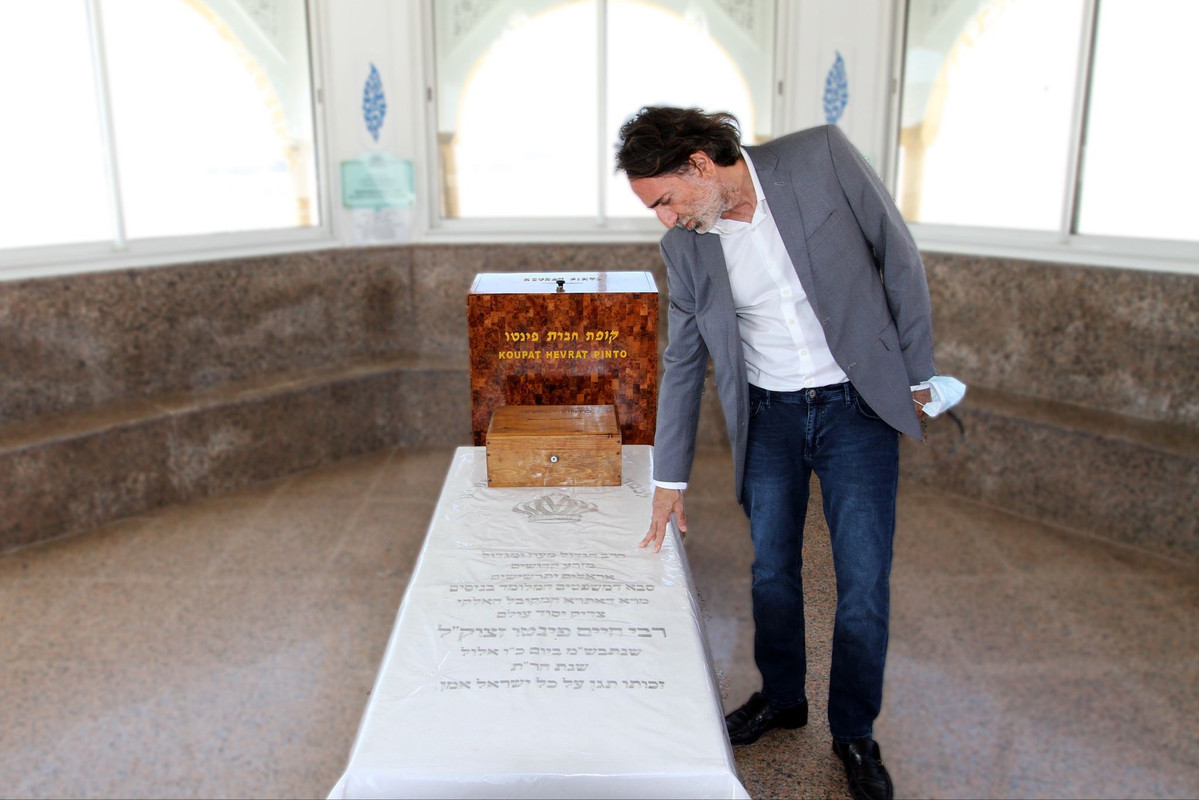Many treasures are hidden within the coastal Mogador city, today known as Essaouira, which is characterized by its rich, multidimensional culture. This small city is a melting pot of Amazighen, Arab, Jewish, Muslim, African, and European influences, which give it a special place along the coast as one that is uniquely hyper-pluralistic.
Recently, the old medina of Essaouira has been recognized as a United Nations Educational, Scientific and Cultural Organization (UNESCO) World Heritage Site. In addition to the fortifying architecture of the medina, the intangible heritage of the city has also been recognized by UNESCO, especially the distinguished Gnaoua culture, music, and rituals.
On Friday, September 17, HAF President Dr. Yossef Ben-Meir, with Fatima Zahra Laaribi and Jennan Al-Hamdouni of the USAID Religious and Ethnic Minorities Activity (REMA) team, visited Essaouira, originally called Mogador. The visit had two purposes: to meet civil society organizations (CSOs) that focus on cultural projects and to visit the Jewish and the Christian cemeteries where the High Atlas Foundation (HAF) implemented a cultural interfaith project in 2012-2013.
The team first visited the Christian Cemetery then the Jewish Cemeteries. The latter includes both the old cemetery, which is located by the sea, and the new cemetery located opposite the old one. The old cemetery is separated from the ocean by a single wall, and all of its tombstones are made of rocky stones that bear witness to the nobility of its history and authenticity. The wall of the Jewish cemetery is surrounded by trees planted by HAF with local community leaders and youth. They continue to grow beautifully.
HAF team visiting Christian Cemetery in Essaouira
Old Jewish Cemetery in Essaouira.
Afterward, the group headed to Association Bayti, where HAF met with members of thirteen local cultural heritage CSOs. The meeting was opened by Dr. Yossef Ben-Meir and Mr. Hassan Elkadiri, President of Association Bayti. Each association introduced its mission, activities, and the domain of intervention. Those in attendance were authors, researchers, tour guides, teachers, and students who are intellectuals and active members in their city. They profoundly understand the unique culture that characterizes the “Argan city,” and they are eager to preserve its multidimensional heritage.
Dr. Ben-Meir began the dialogue among the associations by motivating them to put their minds together and think about a common cultural project that simultaneously meets their interests. Mr. Elkadiri agreed to facilitate the discussion among the guest associations with an open mind and heart. He started by brainstorming ideas about the project.
The discussion was very interactive, and each person shared their own project ideas. All of the ideas put forward are steeped in reviving heritage. They include:
- Documenting heritage through scientific research
- Establishment, facilitation, and growth of tolerance clubs at schools
- Organizing rural caravans focused on archiving, raising awareness through theater, and environment
- Documentation of cultural heritage through memory work, inclusive of engineering, art, oral histories, and heritage
- Emphasis on theater as a basis to consolidate this memory
- Legal advocacy for children, women, and disadvantaged groups
The CSOs developed a singular cultural project that embodies their collective vision. It is entitled “The Caravan for Essaouira Memory.”
At the end of the meeting, participants went through all the points and discussed the main ideas of the project. They successfully reached consensus and formed themselves into the “Coalition for Memory.”
The details of the one-year project are as follows:
Targeted Beneficiaries: Women, youth, and men
Main Objective: Advance the values of coexistence
Specific Objectives:
- Revive Essaouira’s memory (a set of values that were disappeared through the archives and the research)
- Activate the role of youth in raising awareness among women and children about their rights and position to defend their rights
- Form a coalition of associations to create collective power
Activities:
- Produce two plays per year
- Make 4-5 videos by children called “Animate it”
- Organize an exhibition for arts (murals)
- Conduct scientific research (anthropology, archeology, and sociology)
- Promote archaeological solidarity tourism
- Organize intellectual seminars
- Preserve natural life and heritage, including the conservation of rare endemic bird species and building a lake to accommodate them and the planting of 2,000 Argan, almond, and carob trees per year
Territorial Domain:
- Essaouira, Haha, and Chiadma
Partners:
- Regional council
- Municipal council,
- Regional and collective councils
- Regional delegation
- League of private schools
- Civil associations and youth clubs
- Rural communes









